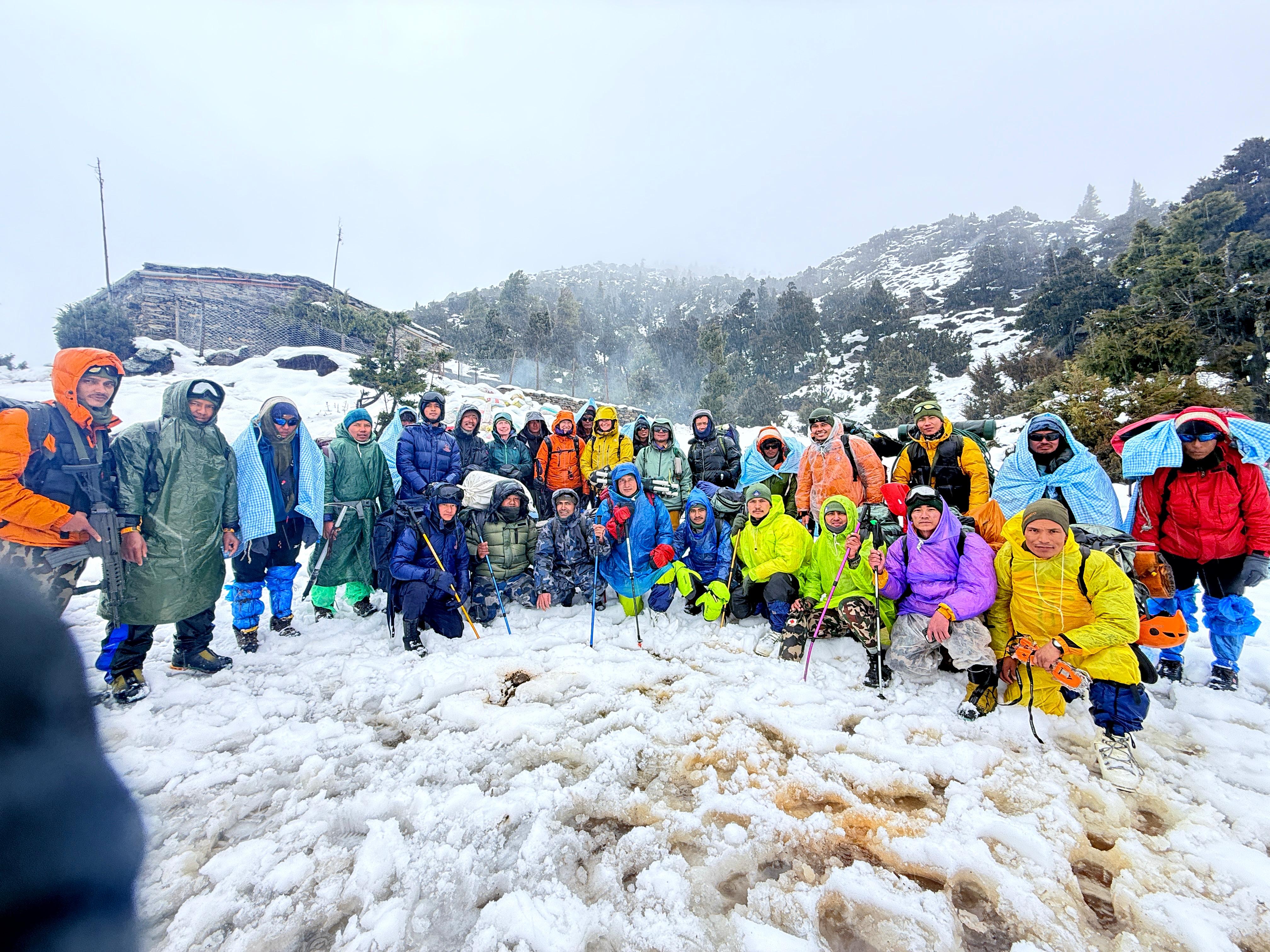Fifteen trekkers rescued after four days trapped in Mustang snowstorm
Army team reaches stranded group at 4,900 meters after failed helicopter attempts; all safe and in good health
A ground rescue team has rescued three British women and twelve Nepali trekking staff who were trapped for four days in a snowstorm at an altitude of 5,100 meters in the Hidden Valley of Mustang, officials confirmed.
The rescue team, led by Major Prashant Bishta of the Nepali Army’s High Altitude Training Academy in Jomsom, found the group at around 10:30 a.m. near Batase Danda at about 4,900 meters, according to Army spokesperson Rajaram Basnet.
“Due to poor visibility, the rescue team could not locate the trekkers yesterday. This morning, they discovered that both groups had camped very close to each other,” Basnet said.
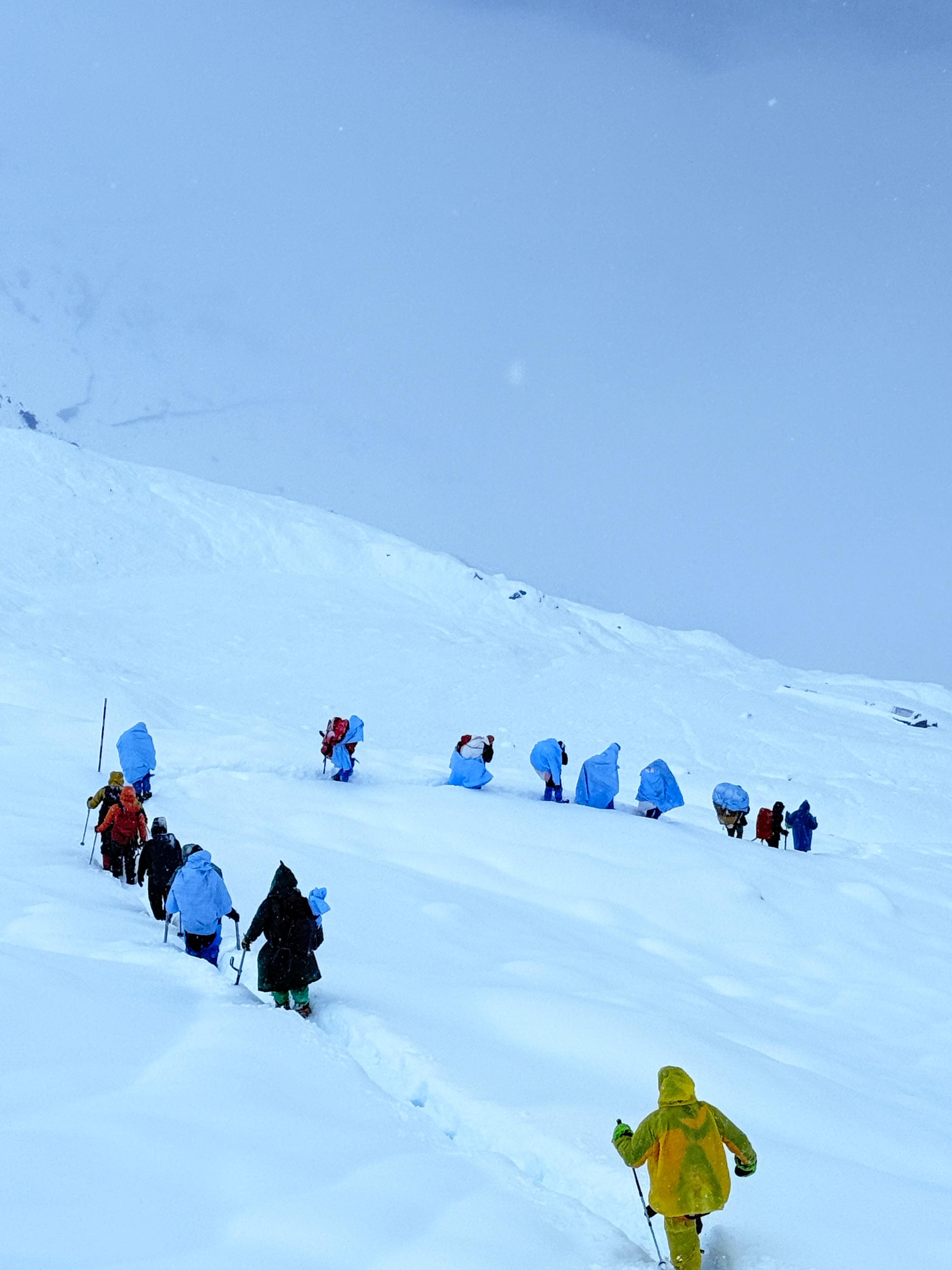
Rescuers and trekkers managed to find each other using whistles, he added. “All members of the trekking team are in good health. Nobody required medical attention,” Basnet told Everest Chronicle.
The rescued group was brought to the Army training academy in Jomsom for brief medical check-ups before returning to their hotels to rest.
The team had been stranded since Monday (October 27) in the area above Marpha Valley, also known as Hidden Valley—an isolated high-altitude basin beneath Tukuche Peak in the Dhaulagiri Range.
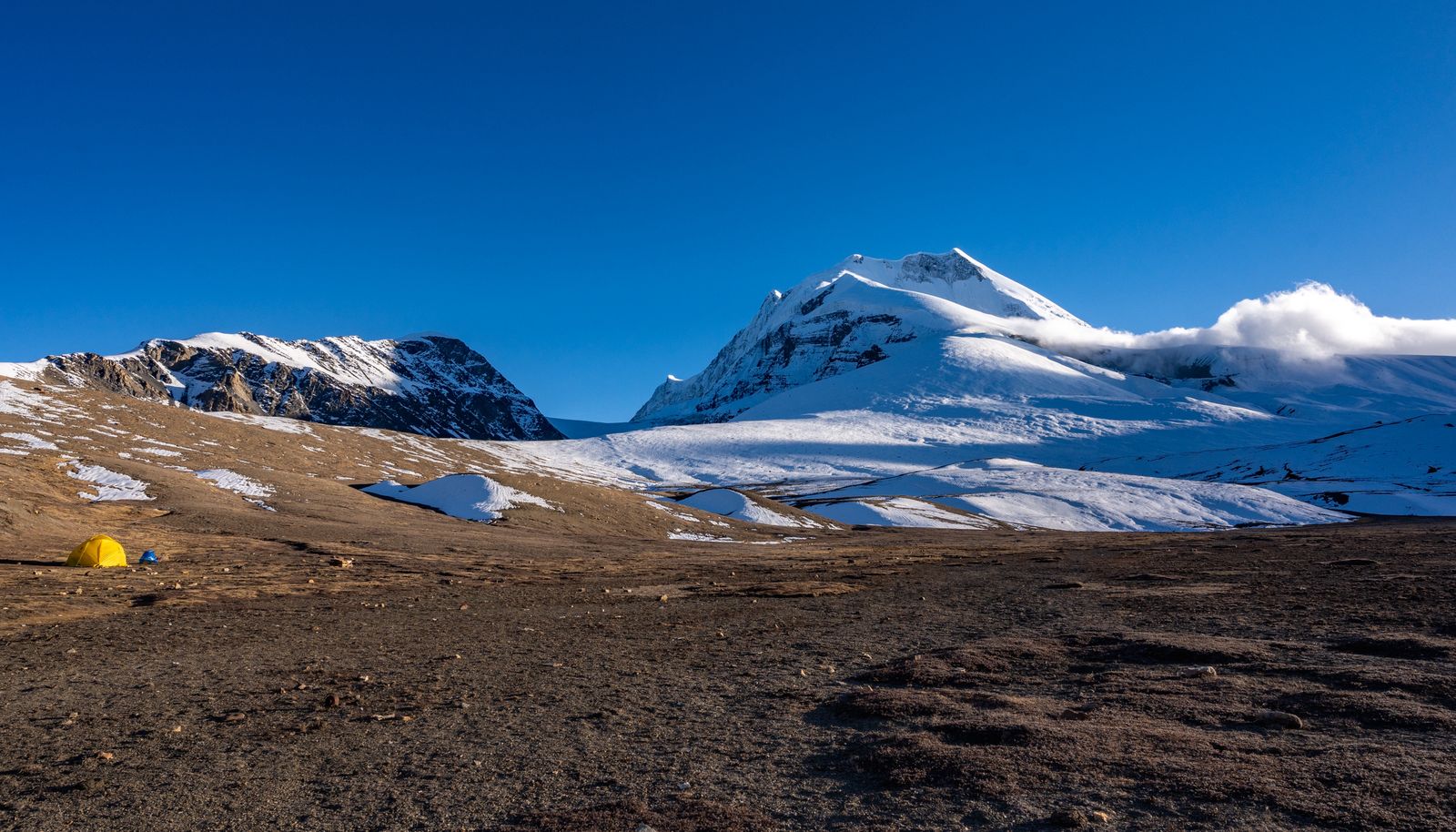
Hidden Valley beneath Tukuche Peak Photo: Sandip Sharma
The trek, organized by Sacred Himalaya Treks and Expedition, began in Barbang, Myagdi district. The group was scheduled to spend two days at Dhaulagiri Base Camp before heading to Hidden Valley.
“Fortunately, the team had reached Hidden Valley when the heavy snowfall began. Had they still been at Dhaulagiri Base Camp, they would have been in danger. They couldn’t move either toward Myagdi or Mustang,” said Binay Lama, owner of the trekking company.
When the weather failed to improve, Lama’s company requested an aerial rescue through the Mustang District Administration, but helicopters were unable to fly from Pokhara due to poor conditions.
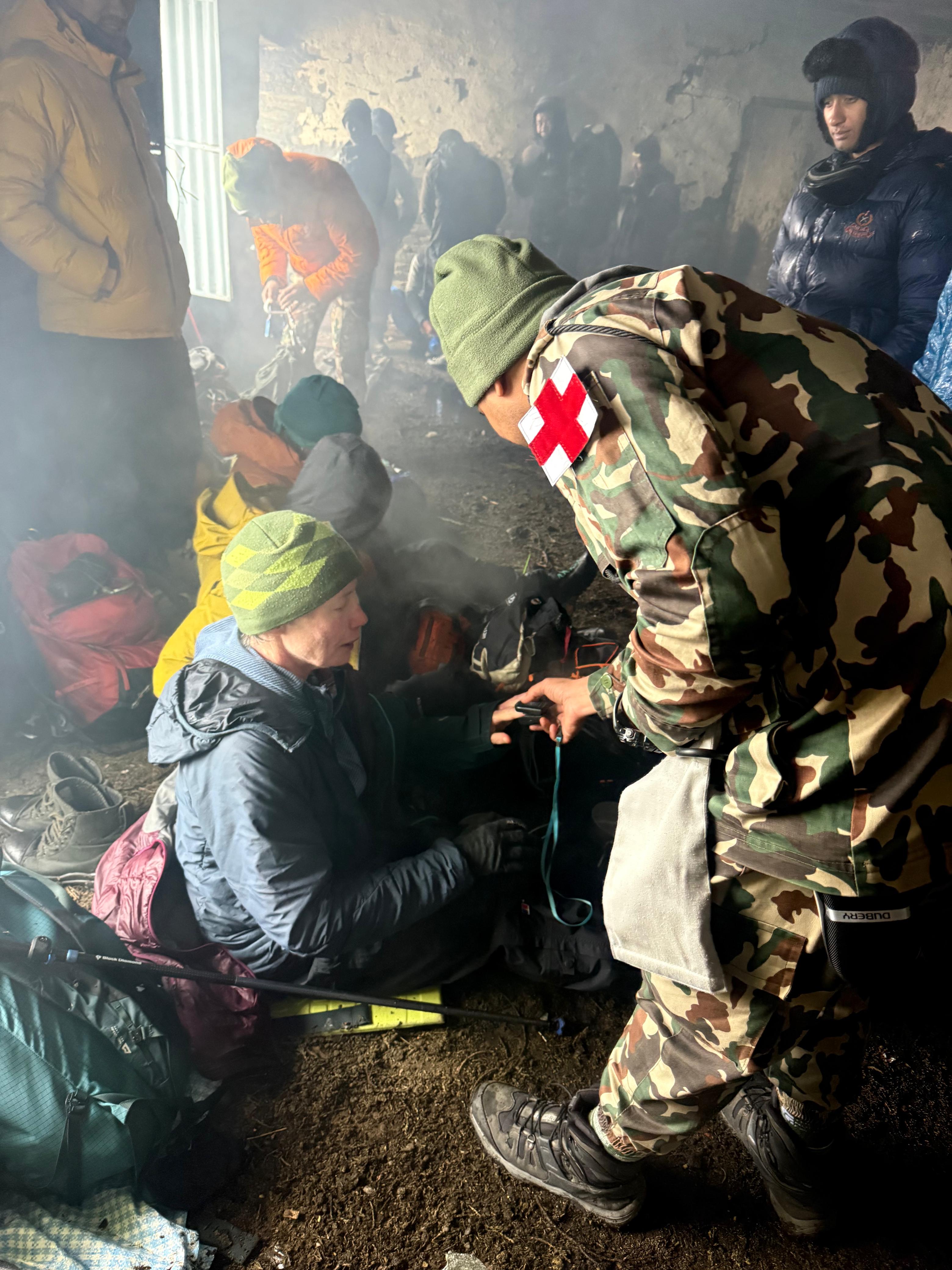
“There was constant snowfall couple with rain. We had no idea how to reach them. That’s when the Nepal Army’s high-altitude rescue team stepped in,” Lama said.
A joint rescue team launched on Wednesday afternoon, coordinated by the District Administration Office. Lama advised his team to start descending from the valley while the Army team climbed from below.
To lighten their load, the Nepali support staff left behind non-essential items such as kitchenware and tables. They crossed Dhampus Pass (5,200m) to meet rescuers.
The team was walking in complete whiteout condition, resting in tents. The supplies was running out.
Lama then took assistance from a British mountain guide Tim Bird to read GPS data and navigate through whiteout conditions on the mountain.
“Had we lost that connection, it could have been a completely different story,” Lama said.
The trekkers were identified as Catherine Wilson and Emily Jene from Britain, and Mary Reape from Ireland.
Nepali staff included Dirgalal Lama, Nimaraj Lama, Maandhoj Lama, Navin Lama, Tashi Sherpa, Tshering Tamang, Sonam Tamang, Nima Lama, Kaila Tamang, Buddharaj Tamang, Kanchhaman Tamang, and Dorje Tamang.
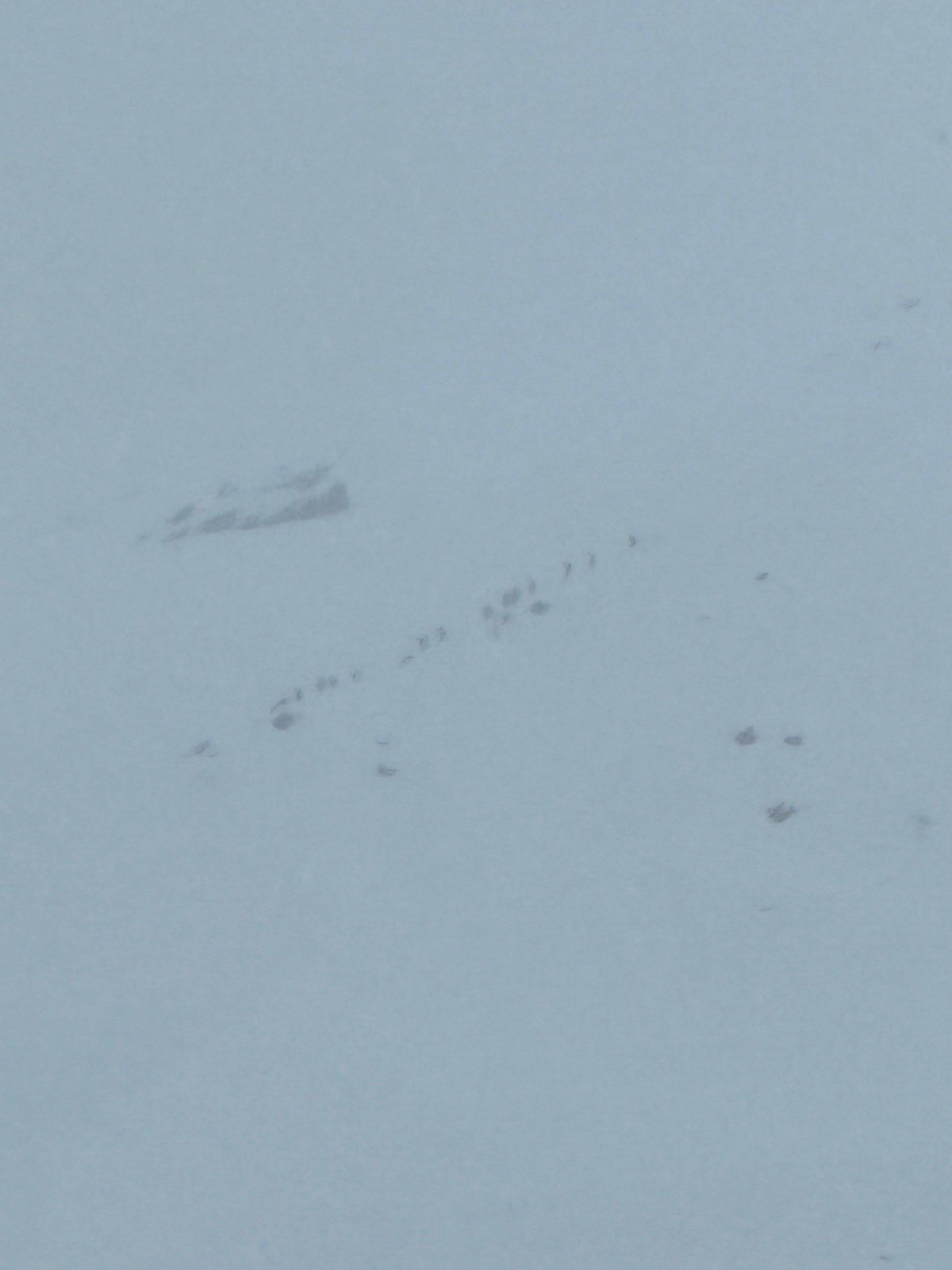
After a two-day struggle through blizzard conditions, the group reached Batase Danda, where rescuers finally located them. It was still snowing and raining. From there, they descended to Yak Kharka, where the Army had set up a temporary base and lit fires to warm the rescued trekkers.
The trekkers received a brief medical check-up at the Nepal Army’s Training Academy before heading to their hotels in Jomsom to rest.
Heavy snowfall in recent days has disrupted several trekking routes across the Himalayas, prompting authorities to issue warnings of snowstorms, landslides, and road closures.
According to the Department of Hydrology and Meteorology, the recent precipitation is linked to Cyclone Montha, which formed in the Bay of Bengal. The Department has forecast that rain and snow will continue across Nepal until Saturday.
High hills and mountainous regions are still experiencing unseasonal rainfall and snowfall.
